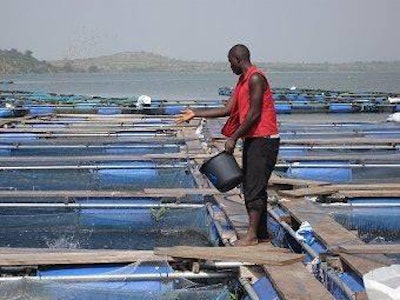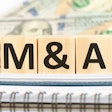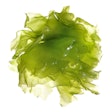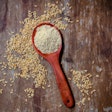
Egypt will see a rapid expansion in its capacity for producing extruded fish feeds, according to recent announcements and reports. Two major European players have announced a significant increase in their Egyptian aquafeed investments, while at least two poultry-feed companies with headquarters in Egypt are described as being well ahead with plans to start their own fish-feed production.
Putting a tonnage value to the projected market growth is difficult because of uncertainties over past statistics, but the potential is clear. Egypt has a large and increasing domestic fish consumption. Cairo, with about 17 million people, is the capital city of a country in which the population size is 85 million currently and may exceed 93 million by 2018. Fish is an important part of the national diet and a rising proportion of it will come from fish-fed sources.
Part of the feeding done in Egypt’s aquaculture sector at present involves extruded feeds, another part is pelleted and a third category is simply direct-fed corn. Put together, these may represent as much as 750,000 metric tons per year in 2013, with extrusion accounting for somewhere between 80,000 to 100,000 metric tons of that total.
All of the extruded feed is produced within the country – none is imported. Industry sources say that five companies own or operate extruders at present, out of 20 or more enterprises involved in manufacturing feeds for fish.
Growth potential
One company to have taken up the challenge of manufacturing more aquafeeds using extrusion within Egypt is Denmark-based Aller Aqua. Its Egyptian arm was established in 2011 when it acquired 60 percent of the shareholding in a family owned enterprise near Cairo that produced fish feeds under the name of Zoocontrol.
“We had started negotiations with the family almost three years before,” reports Hans Erik Bylling, CEO of the Aller Aqua group. “We already had a long experience of manufacturing fish feeds in Denmark, Poland and Germany, and we could see how large aquaculture was in Egypt compared with European markets. The Egyptian aquaculture sector was producing around 700,000 metric tons of fish per year and the country’s Ministry of Agriculture wants to see the amount grow to 1 million metric tons by 2017.
“For us, therefore, Egypt’s market was big, healthy and growing fast. It was clearly the right place to put our first investment in manufacturing outside Europe. Zoocontrol was also a good choice for us. It had the right setup with a Wenger extruder in a nice factory, and therefore, it provided the perfect platform for our entry,” Bylling says.
By using its full capacity in 2013, the factory will produce approximately 20,000 metric tons of fish feeds. Earlier this year, however, Aller headquarters confirmed that a second aquafeed mill will be built by Aller Aqua Egypt, on a site adjoining its first plant. The aim is to triple the enterprise’s annual production capacity and thereby become Egypt’s largest manufacturer of extruded feeds for tilapia.
Bylling comments that the expansion is targeted at the market within Egypt, both for its size and for its need for better-quality feeds. Most of the fish feeds at present are pelleted, he adds, but extrusion provides a valuable lift in quality.
Made for tilapia
This will greatly help the supply of tilapia feeds in particular. Egypt is already in second place on the world stage for the tonnage of tilapia fish that it produces annually. Although it cannot overtake market leader China for fish output, it will register a considerable growth in its own production in the coming years as tilapia meet a major increase in national animal protein requirements for human consumption.
The U.S. Soybean Export Council reports that poor-quality tilapia feed has been identified as one of the constraints currently limiting Egyptian aquaculture. Aller’s Egyptian factory is formulating and supplying feeds for tilapia fingerlings and grow-out to support a model feeding demonstration at WorldFish in Abassa, Egypt. The demonstration compares the soy-optimized feed in extruded floating and pelleted sinking forms with genetically improved and non-improved tilapia, to show the economic, productivity and sustainability advantages of extruded feed and improved-strain tilapia.
The council also indicates that two of the largest poultry groups in Egypt – named as Cairo Poultry Company, or CPC, and the Wadi Group – have seen an attractive opportunity to diversify by adding aquafeed mills to supply extruded tilapia feeds.
Furthermore, in April this year came an announcement from Netherlands-based nutrition group Nutreco that it had reached an agreement to become the full owner of an Egyptian feed business, in which it had been a one-third partner since 2001. Originally this business, named Hendrix Misr, was a manufacturer and marketer of poultry-feed concentrates. But since the start of 2009 it has been re-invented by opening a 5 tons/hour production line with extrusion for tilapia feeds.
Triple target
Nutreco’s announcement said Hendrix Misr currently had an annual output of 25,000 metric tons of fish feeds, but the plan now would be to triple this to 75,000 metric tons/year by 2015.
“Egypt is definitely a growth market,” says Viggo Halseth, chief operating officer of Nutreco’s aquaculture division. “Our partnership in the joint venture meant that we already knew the market, and it was a natural move to make additional use of our specialization in fish nutrition.
“The plan for the company’s expansion builds for the expected growth in Egypt’s feed sector. We view this exclusively in terms of the domestic Egyptian market rather than to export any of the feeds from there to other countries. The market in Egypt is large enough on its own to justify the extra investment.
“But it does also fit in with our stated aims for our Skretting aquafeeds business globally. We have said that our ambition is to grow the total volume from about 1.7 million metric tons in 2012 to 2.7 million metric tons, and within that we want to see almost a 50/50 split in the increase between salmonid and non-salmonid feeds. On that basis, by 2016 we would be producing almost 1.25 million metric tons of feeds for non-salmonids and a significant proportion of that would be for tilapia.
“Out of the 15 countries in which we produced Skretting aquaculture feeds last year, our production of tilapia diets was located mainly in Brazil, with some in Vietnam and less so in China. The acquisition of 100 percent of Hendrix Misr in Egypt gives us a boost in tilapia feed production capacity to go with that intended from our agreement to purchase the largest manufacturer of tilapia and shrimp feeds in Ecuador, that is also involved in a feed joint venture in Honduras.
“When you speak of a country such as Egypt, one difficulty with estimating the size of the aquafeed market is that it may even shrink for a time with the conversion to the more use of extruded feeds. These will give a much lower feed conversion ratio and the Egyptian market for fish feeds will therefore be less, temporarily, than today’s 750,000 metric tons. In the medium to longer term, however, you are still talking about the likelihood of double-digit growth,” Halseth says.
More fish, more countries
Although there is no question that tilapia will remain the primary target for Egypt’s next generation of industrially manufactured feeds, the possibility is being discussed of a secondary piscine objective in the form of flathead grey mullet.
There is already some Egyptian production of grey mullet, Halseth comments, but it is not necessarily fed. More typically, the mullet are included in tilapia ponds to keep them clean, eventually yielding about 100kg of these fish for every pond harvested. But there could be a greater industrialization of grey mullet aquaculture in Egypt, which would require the development and manufacture of appropriate sinking feeds.
While other aquaculture specialists tend to agree with this suggestion, there is less general agreement among the fish feed operators on whether Egypt should be viewed as offering an entry into other parts of the African country as well as being appealing in its own right. For some, it is a regional platform, but Halseth disagrees.
“I do not think that Egypt will be exporting tilapia to traditional markets such as in Europe or the USA,” he says. “The fish produced by the Egyptians are rather small according to international standards and are not therefore really suitable for export.
“It is true that we have added Africa to our target growth areas recently, but we view it as separate to our involvement in Egypt. At present we sell some catfish feeds to Nigeria and some sea bass and sea bream feeds to Tunisia. We are sure that African aquaculture will grow quickly and we want to increase Skretting’s presence in that region.
“African markets are extremely diverse, of course, and their combined volume of aquaculture production probably is only about 2 million metric tons at present so it is not big. Also, by no means all the fish being produced today in Africa are fed. Even so, we have decided that we want to be there at an early stage in order to learn and to grow with them.”










